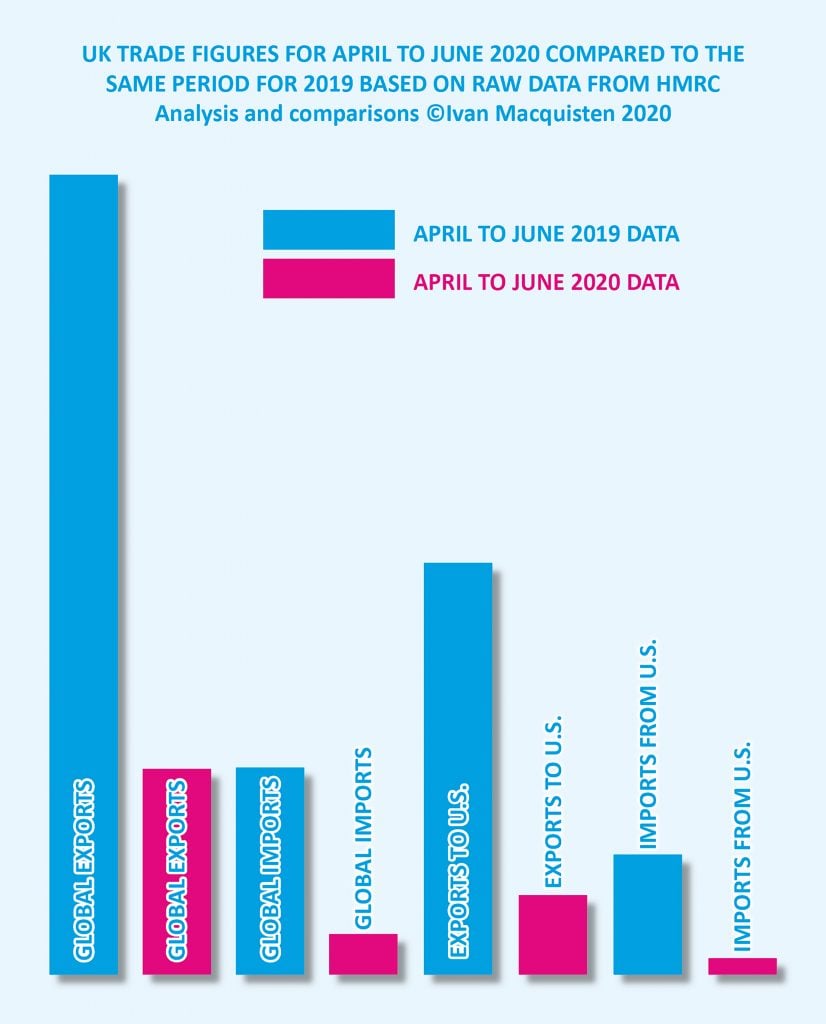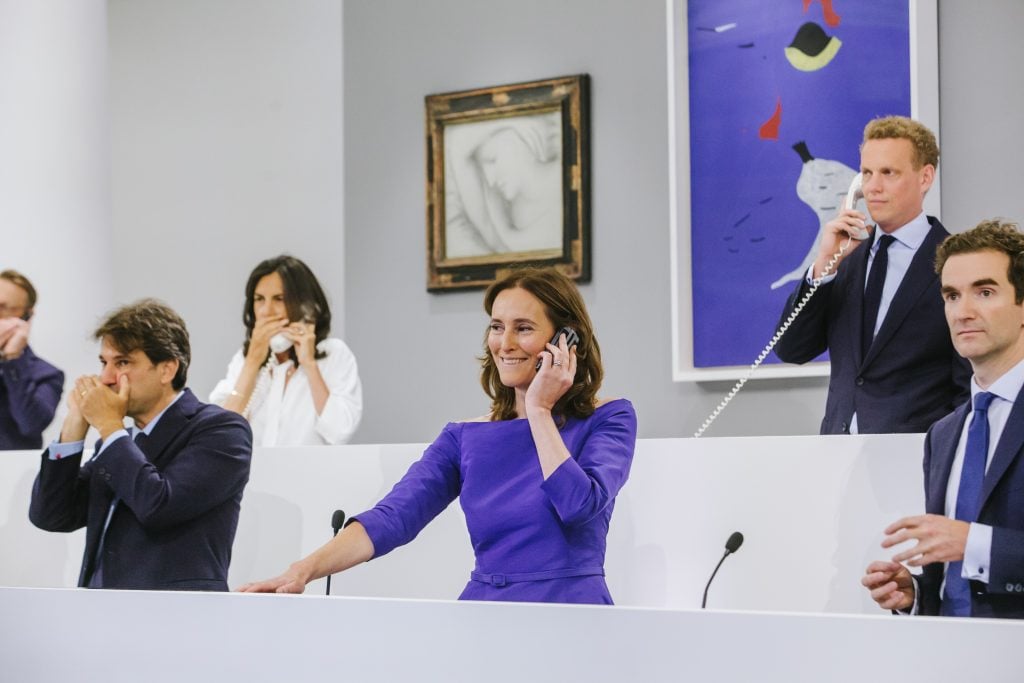Analysis
New Data Paints a Grim Portrait of a Steep Drop in Trade in the UK Art Market. But the Full Picture May Not Be So Dark
Despite the gloom, the market shows some reassuring signs of demand and one-off factors may mask a better performance.

Despite the gloom, the market shows some reassuring signs of demand and one-off factors may mask a better performance.

Ivan Macquisten

Startling new data reveal the massive impact that the pandemic has inflicted on the UK art market in the months after lockdown. Official figures show that exports fell by 75 percent year on year for the second quarter as restrictions came into force, and imports dropped by 80 percent.
The figures from HMRC—the UK’s equivalent of the IRS—for April to June 2020 show an even greater decline in trade with the US, the world’s leading art market, with exports there falling 80 percent and imports by more than 85 percent.
But trade associations argue that the health of the UK’s art market may be in better shape than the bleak outlook offered by these figures.
The raw data implies a chilling prognosis for the UK art market. Fine art exports were down from £2.06 billion (about $2.7 billion) in the second quarter of 2019 to £560.6 million ($738.6 million) for the same period in 2020. Fine art exports to the US fell from £1.077 billion to £214.6 million ($1.4 billion to $282.9 million).
Meanwhile, fine art imports dropped from £553.2 million to £111.4 million ($729 million to $146.8 million), while fine art imports from the US declined from £335 million to £43.6 million ($441.5 million to $57.5 million).

Bar chart showing UK art market exports and imports for April–June 2020. Courtesy Ivan Macquisten.
But trade associations say it may look worse than it is. While such headline figures are to be expected in the wake of the unprecedented events of the past few months, the British Art Market Federation has cautioned that the true picture of market health may be masked by a complex set of factors arising from the pandemic, such as restrictions artificially limiting the movement rather than the sale of goods.
“We fought very hard to keep the Export License Unit open because it seemed unacceptable to shut it without making emergency provisions,” federation chairman Anthony Browne said, adding that the temporary closure of the UK’s export licensing service will have delayed the movement of some art, while shippers also faced restrictions, especially with air freight being redirected to emergency relief.
Other evidence from around the UK also indicates that the underlying market may be stronger than it appears.
The average sterling-to-dollar exchange rate for April to June 2019 was $1.25 compared with $1.24 for the same period in 2020, according to the foreign exchange currency service X-Rates, so currency fluctuations were not a significant factor.
Moreover, the statistics stand in stark contrast to 2019 totals, which showed exports recovering strongly after four years of relative stasis, while imports, which fell significantly over the same period, had finally begun to recover.
Comparison figures for the first quarter show a 2.8 percent decline in exports and a 22.3 percent fall-off in imports in 2020.
These trade figures measure the registered value of goods crossing UK borders rather than actual sales, but long-term trends point to the data reflecting market behavior fairly closely. However, in this case the potential divergence between sales demand and the ability to move art and collectibles once transactions had taken place mean that the real picture for April to June is likely to be more positive.
Despite Christie’s and Sotheby’s reporting notably weaker sales year on year to July, a significant migration of sales online in response to pandemic restrictions is addressing this.
Sotheby’s, which experienced a 25.3 percent ($800 million) year-on-year fall for the first seven months of 2020 to $2.5 billion, has retargeted its sales effort online at younger buyers, anticipating a better yield from those under 30. Chief executive Charles Stewart noted that client confidence in technology had “fundamentally changed.”

“Rembrandt to Richter” live auction, July 28, 2020. Courtesy of Sotheby’s.
Christie’s has looked at developing new sectors to attract younger buyers, including the sneakers market, already a multi-billion dollar collecting base globally. Its partnered “OriginalAir: Michael Jordan Game-Worn and Player Exclusive Sneaker Rarities” auction, an online-only event between July 30 and August 13, included a pair worn by the basketball star that made a record $615,000, while the auction total was just over $930,000.
Clearly, businesses that rely on live events have suffered, but anecdotal evidence and sales results from a number of UK provincial salesrooms point to a surge in sell-through rates at auction, with totals holding up well as almost all successful bids now come via the internet.
The wider fortunes of dealers and fairs—some of which have been held online—are harder to gauge. However, one bellwether fixture for the UK low-end and middle markets, the Giant Shepton Flea Market, gave some indication of demand when it returned as a live event—albeit with outside stalls only—on August 16.
Organizers Cooper Fairs counted around 4,000 visitors to the 350-plus stalls with “lots and lots of sales.”
“Lots of dealers had been to several other showground events and all reported them busier than usual for this time of year,” said a spokesman. “There is a big appetite for business amongst everyone, I think especially as our high streets are still dismal.”
Art trade associations including the British Art Market Federation, Society for London Art Dealers, and LAPADA, managed to have auction houses reclassified with retail outlets rather than live performance venues so that they were able to re-open their doors in June instead of having to remain closed.
The Export Licensing Unit is open again and the Export Reviewing Committee will return in September.
“The key measure will be what happens in the second half of the year,” Browne of the British Art Market Federation said. “This is vital because the level of imports is a major factor in the UK retaining its position as the world’s second largest art market.”